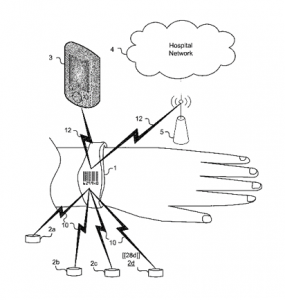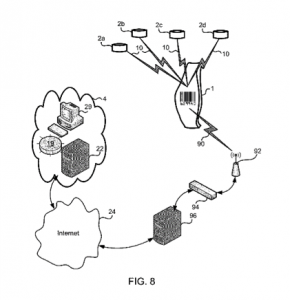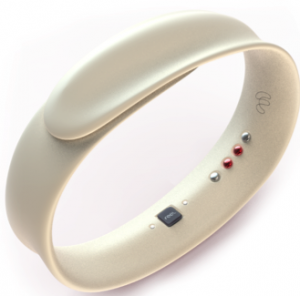Medical devices include a wide variety of equipment, tools and devices for medical use. From the more conventional definition, medical devices can be seen in clinics and hospitals as well as in our homes when they are necessary to meet patients’ healthcare needs or perform sanitary functions. From Q’tips and blood pressure monitor to pacemakers for heart conditions and x-ray machines for orthopedics, we need these medical devices to discern and cure diseases, and to improve or maintain our healthcare needs. I would like to discuss the trend of medical devices and its economic impact on the affordability of them and accessibility of medical device companies in three articles respectively. This article is dedicated to a futuristic view of medical devices, particularly wearable devices.
According to the section 201(h) of the Federal Food Drug & Cosmetic (FD&C) Act, a device is:
- “an instrument, apparatus, implement, machine, contrivance, implant, in vitro reagent, or other similar or related article, including a component part, or accessory which is:
- recognized in the official National Formulary, or the United States Pharmacopoeia, or any supplement to them,
- intended for use in the diagnosis of disease or other conditions, or in the cure, mitigation, treatment, or prevention of disease, in man or other animals, or
- intended to affect the structure or any function of the body of man or other animals, and which does not achieve its primary intended purposes through chemical action within or on the body of man or other animals and which is not dependent upon being metabolized for the achievement of any of its primary intended purposes. (Is The Product A Medical Device?)”
In some sense, medical and healthcare apps and software that rely on sensors or hardware to support the diagnosis or “mitigation … of diseases” can be considered medical devices. Some recent trends of medical devices include increased mobility through decentralized mobile apps and wearable devices that tracks patients health. Remote medical devices that are considered Internet of Things (IoT) brought healthcare services to the fingertips of average citizens. Futuristic wearable medical devices can improve the efficiency and clinical quality of hospitals or even bring the monitoring of patients with less severe diseases that traditionally needing hospitalization to home. The following are some examples.
In 2013, a patent has been issued to Qualcomm Inc for ¨Identification and connectivity gateway wristband for hospital and medical applications¨ with patent number US 8405502 B2. This wristband will not only serve as a patient identifier, a medical sensor, but also has a communication gateway so that ¨data can be reliably relayed from the sensors to the hospital’s information system infrastructure¨. These type of wristbands can track patient data and report to the patients´ doctors or nurses for diagnosis, medication administration, location identification, and emergency notification etc. These data collected on patients will allow hospitals to find root causes to diagnose and cure diseases more efficiently (Teague).
Qualcomm launched a XPrize Tricorder competition back in 2012 for participants to develop a healthcare monitoring wristband that diagnoses 13 health conditions non-invasively. The Tricorder is inspired by Star Trek and the competition received fervent participation. There were 312 pre-registered team and 29 competing teams. Now, there are two finalists. They are required to monitoring the 5 vital signs “
- Blood Pressure
- Heart Rate
- Oxygen Saturation
- Respiratory Rate
- Temperature
”. Diagnose the following 10 conditions: “
- Anemia
- Atrial Fibrillation (AFib)
- Chronic Obstructive Pulmonary Disease (COPD)
- Diabetes
- Leukocytosis
- Pneumonia
- Otitis Media
- Sleep Apnea
- Urinary Tract Infection
- Absence of condition
” and can elect to diagnose 3 among these conditions: “
- Cholesterol Screen
- Food-borne Illness
- HIV Screen
- Hypertension
- Hypothyroidism/Hyperthyroidism
- Melanoma
- Mononucleosis
- Pertussis (Whooping Cough)
- Shingles
- Strep Throat”
Currently, there are two teams competing for the final $10M Qualcomm Tridcorder XPRIZE round, one from Taiwan led by Chung-Kang Peng and one from the US led by Basil Harris. The winner will be announced in the second quarter of 2017.
While we are waiting for the final result of the 5 year competition, another medical wristband product “Feel” for monitoring emotion are available for reserve. Traditionally, a simple way of measuring a mildly psychiatric patient’s wellbeing is based on the patient’s memory of one’s own emotion or behavior when the patient’s family is not available or incapable to do so. This applies to elderlies or anyone living alone. Even if the people around the patients do observe, without psychologist’s accurate observation for an extended period of time, it could be biased.
Psychiatrists or psychologists might be telling patients to track their emotion every day with a rank in a scale decided arbitrarily by the patient. This is extremely inaccurate in case of sudden traumas or other events causing forgetfulness when the patient fails to track.
SentioSolutions developed its product Feel that tracks users´ emotions through sensors that tracks galvanic skin response, blood volume pulse and skin temperature to predict user´s emotion through algorithms. This type of wristbands can help people with mood swings or even mild psychiatric patients with emotion management. This revolutionalizes psychiatry industry by supporting research with more detailed and accurate data. Though emotion is hard to define using pulses and skin responses, it can be used as an alternative once more research are conducted with clinical data. It might be used a guideline for all patients if it is clinically accurate.
In the near future, we will be able to see these futuristic healthcare monitoring bands on our own wrists. When some of us are using sleep monitors or calorie trackers to track sleep patterns and exercise log already, these more advanced wristbands will hit the patient market with no reluctance. With the data collected by these sensors on the wristbands and synchronous transmission of the data, we need to carefully handle the confidentiality and safety of patient data and stress again the importance of cybersecurity.
References
Feel. Retrieved 20 Feb, 2017 from https://www.myfeel.co/
Is The Product A Medical Device? FDA. Retrieved 20 Feb, 2017, from https://www.fda.gov/medicaldevices/deviceregulationandguidance/overview/classifyyourdevice/ucm051512.htm
Teague, Edwards. Identification and connectivity gateway wristband for hospital and medical applications. Google Patent. Retrieved 20 Feb, 2017 from https://www.google.com/patents/US8405502

































